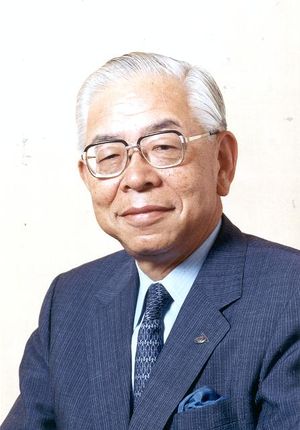Tadahiro Sekimoto
- Birthdate
- 1926/11/14
- Birthplace
- Hyogo, Japan
- Death date
- 2007/11/11
- Associated organizations
- NEC, COMSAT
- Fields of study
- Communications
- Awards
- IEEE Alexander Graham Bell Medal, Edwin Howard Armstrong Award, IEEE Medal of Honor
Biography
Tadahiro Sekimoto was born on 14 November 1926 in Hyogo, Japan. He received the B.S. degree in Physics and the Doctor of Engineering degree from the University of Tokyo in 1948 and 1962, respectively.
In 1948, Dr. Sekimoto joined NEC as a member of the Central Research Laboratories staff: He was promoted to Chief, Basic Research Department, Communication Research Laboratory in 1965 and in August of the same year, he was appointed to a two-year assignment at COMSAT in Washington, DC, where he engaged in the research of digital transmission technology applicable to satellite communications. Until Sekimoto's arrival at COMSAT, no digital communications projects had existed there. He set up a Communications Processing Laboratory and proposed, obtained approval and funding for, and managed or helped manage the execution of numerous voice, data, and video processing projects, including pioneering the foundations of time division multiple access (TDMA).
TDMA is not only used globally for satellite communications, but has become virtually a household acronym as a result of deployment in cellular communications systems. Of particular significance in Sekimoto's work in TDMA was the world's first successful demonstration of a TDMA satellite signal transmission between the Andover, Maine, USA, and Mill Village, Canada earth stations, in August 1966. Another innovation was the commercialization of the SPADE system (single channel per carrier PCM multiple access demand assignment equipment) in the INTELSAT network. Other related contributions include digital band width compression transmission of television signals, digital echo cancellers, low bit rate speech source coders, digital speech interpolation and digital channel multiplication. These pioneering innovations contributed to the digital methods used in today's satellite communications.
Upon his return to NEC in 1967, Sekimoto was appointed Manager of Communication Research Laboratory. In 1972, he became General Manager, Transmission Division and, in 1974, he was elected to the Board of Directors. He was appointed Senior Vice President in 1977 and Executive Vice President in 1978, responsible for domestic sales. He strengthened the company's sales operation for the domestic market by creating a business structure suitable for marketing mass-produced electronics products.
In 1980, Sekimoto was appointed President. As President, he strongly promoted NEC's "C&C" concept (the integration of computers and communications), which resulted in a significant sales increase. He assumed the position of Chairman of the Board in 1994. In 1998, it emerged that NEC had overcharged the Japan Defense Agency on military contracts. While he personally played no role in the scandal, Sekimoto resigned from the chairmanship in 1998 in order to make amends for NEC’s errors. Afterward, he served as an adviser to the company until 2002.
Sekimoto was a Life Fellow of the IEEE. He held thirty-five Japanese patents and five patents issued overseas. He presented and published numerous papers at international conferences and in magazines. He received a number of awards, including the Edwin Howard Armstrong Award of the IEEE Communications Society (1982). Sekimoto was the 1996 IEEE Alexander Graham Bell Medal “For pioneering contributions to digital satellite communications and industry leadership in developing digital communications.” In 2004, he received the IEEE Medal of Honor for digital satellites and leadership in computers and communications.
Dr. Tadahiro Sekimoto and his wife Maya had three children: Masakazu, Sumito, and Misako. Sekimoto passed away on 11 November 2007.
Further Reading
Martin Fackler, "Tadahiro Sekimoto, Electronics Executive, Dies at 80," New York Times, Nov. 16, 2007.
